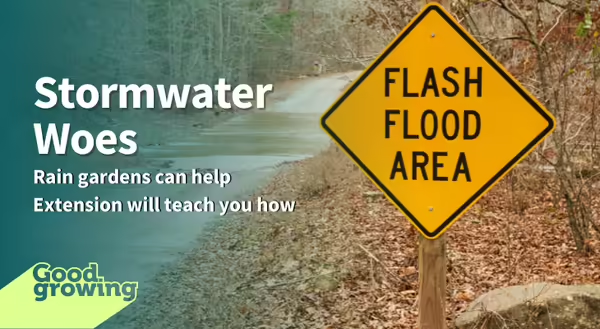
A local problem with widespread implications
What is a watershed? No matter where you live, you are in a watershed. All of Illinois, minus that sliver of land bordering Lake Michigan, is in the Mississippi River Watershed. But we can break down this massive watershed into more local streams and rivers. For instance, I grew up in Adams County, Illinois in the Mill Creek watershed. But watersheds can go even smaller. Perhaps one of the most local watersheds is the one over your head – the roof! The roof of a building is a human-designed watershed. As rain falls across the entire roof, it is sloped to channel that water into a single point of concentration – the downspout. From the peak of a roof to the downspout would be the watershed of your home.
The watershed in Illinois has changed, quite dramatically, over the past centuries. Historically, Central Illinois was a vast, flat prairie, with much of the state being an extensive wetland in the spring and fall. European settlement and the advances in agriculture technology changed all of it. The invention of the moldboard plow by John Deere wiped the prairie clean and replaced it with row crop agriculture. To prevent crops from rotting with the high water table, ag fields had networks of clay (now plastic) piping called field tiles installed to drain the extra water away.
Human development replaced natural spaces with buildings, roads, and parking lots which took a landscape that absorbed water and now sheds it off. Cities and towns sprawled into the countryside. Creating more and more impermeable surfaces.
How we tried to solve the stormwater problem
To meet the demand for all this stormwater runoff, engineers developed infrastructure to collect, convey, and discharge water into rivers and streams. This method of stormwater management treated stormwater as a nuisance that must be rid of as soon as possible.
The problem with all these changes to our landscape is it now concentrates water at greater and greater volumes. When comparing streams of pre-development versus post-development, the increase in impermeable surfaces created an increase in flash flooding events. This problem is exacerbated by more intense rain events caused by climate change.
Most infrastructure is not sized appropriately for the volume of water moving through it. Typically, most infrastructure funding supports the design for an average storm event. But much of our infrastructure is conveying volumes of water beyond that as storm events become more intense. Plus, most stormwater infrastructure is beyond its design lifespan, with no money to have it replaced. So what are we to do?
Something small, that together can lead to a big impact
A problem this big requires a diverse set of solutions. One such option is to return to the watershed of our roof. Examine how and where the water moves during a rain event. Is there a way this water can be diverted from entering the stormwater system? One method being employed by homeowners across the country is building a rain garden to slow stormwater so it can be absorbed by their soil. Some municipalities are even offering incentives to homeowners to build rain gardens on their property.
When dealing with stormwater runoff, there are a lot of things to consider. Such as how big to make the garden or how deep to dig the rain garden basin. And then what type of plants can go in a rain garden? You can have answers to all these questions and more! Illinois Extension will be hosting a Rainscaping Workshop in Hancock County. During this series of classes, participants can learn landscape design and management practices that reduce runoff. This four-part workshop will take place on September 12, 14, 19, and 21 from 5:30 to 7:30 PM at 130 Young Street, Nauvoo, IL in Building A. Not only will you learn about how to design, install, and maintain a rain garden we are going to build a rain garden!
This program is FREE but registration is required for ordering program materials. Register at go.illinois.edu/RainGarden or call the Illinois Extension Hancock County office at 217-357-2150.
Good Growing Tip of the Week: A rain garden is meant to slow water, not hold water. As water slows down it drops sediment and has more time to absorb into the soil. Rain gardens are designed to absorb water over time, but overflow if more runoff enters the garden than it can handle.
Signup for our emails!
Want to get notified when new Good Growing posts are available? SIGN ME UP
MEET THE AUTHOR
Chris Enroth is a horticulture educator with University of Illinois Extension, serving Henderson, McDonough, Knox, and Warren counties since 2012. Chris provides horticulture programming with an emphasis on the home gardener, landscape maintenance personnel, and commercial landscapers. Additional responsibilities include coordinating local county Master Gardener and Master Naturalist volunteers - providing their training, continuing education, advanced training, seasonal events, and organizing community outreach programs for horticulture and conservation assistance/education. In his spare time, Chris enjoys the outdoors, lounging in the garden among the flowers (weeds to most).